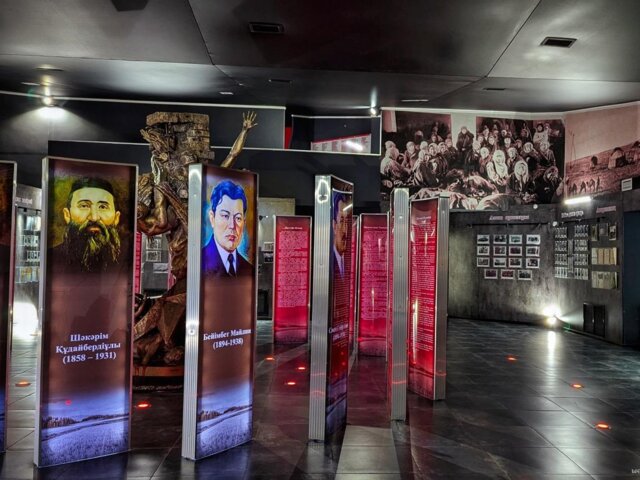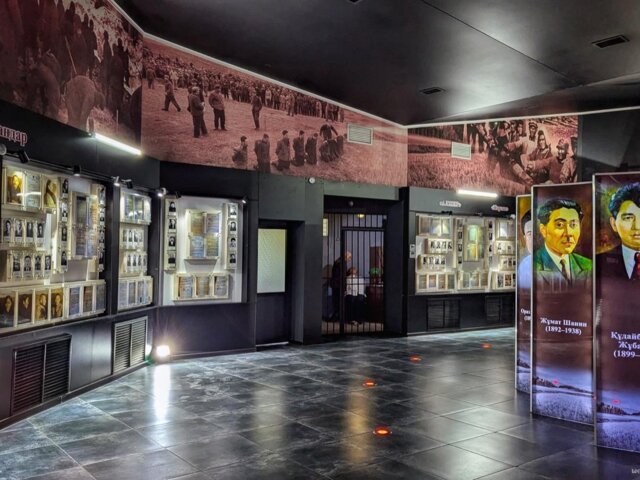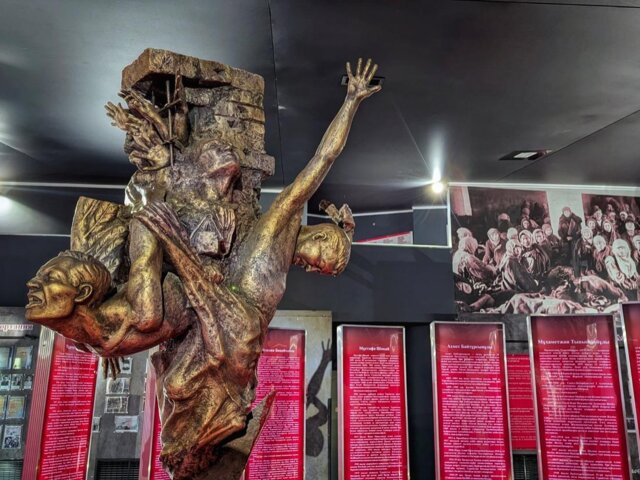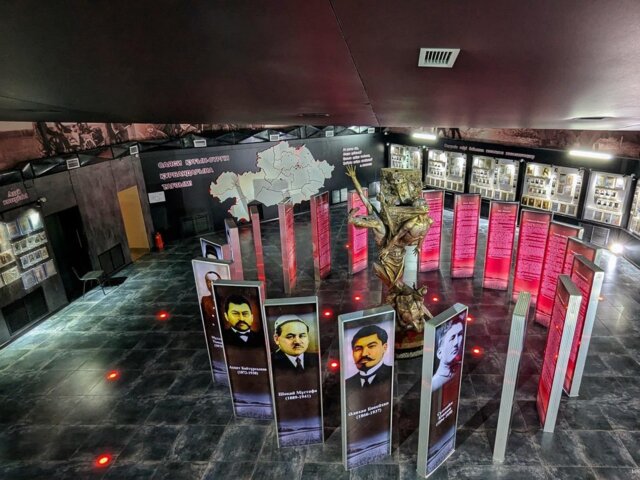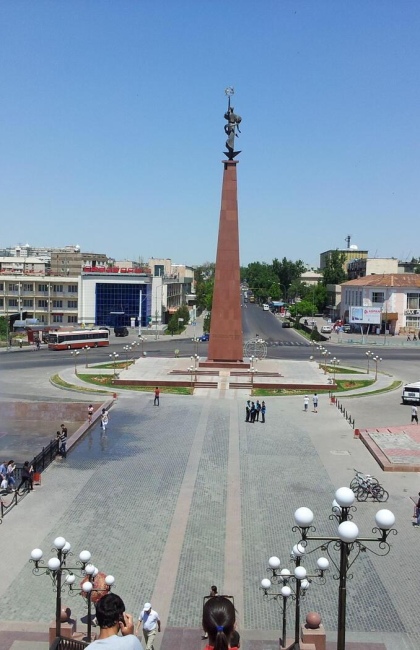Museum of Victims of Political Repression
The Museum of Victims of Political Repression, established in Shymkent in 2001, stands as a testament to a dark chapter in our nation's history. It focuses on the Great Purge, a period of political repression initiated by Joseph Stalin in 1937. These years are marked by the forced exile of countless individuals to Kazakhstan from across the vast expanse of the USSR.
Among the deportees were not just criminals, but also former tsarist civil servants, ex-officers of the White Army, participants in peasant uprisings, members of the clergy, and many others. Numerous individuals found themselves exiled solely for being friends or relatives of already incarcerated persons. Thousands of people were forcibly relocated from their homelands and confined to labor camps such as ALZhIR and Karlag. The Bolshevik authorities also targeted specific ethnic groups within the Soviet Union, including Koreans, Chechens, Germans, Poles, and others. Even the intelligentsia, comprising writers, intellectuals, and artists, were not spared from these persecutions, with political repression claiming the lives of virtually the entire Kazakh intelligentsia.
The museum also sheds light on the Goloshchyokin Genocide, also known as the Kazakh famine of 1930-1933, which took the lives of a million people. Additionally, it delves into the period of collectivization, wherein individual peasant farms were replaced by collective ones and cattle were confiscated, leading to widespread famine.

Inside the museum, there's a powerful sculpture in the main hall called "Repression." It portrays the shattered forms of individuals, with the blood of innocent victims staining its pedestal. It stands as a stark representation of the anguish and torment endured by the Soviet people during the 1930s.
The Museum of Victims of Political Repressions holds a special place in the hearts of Shymkent's residents and visitors alike. It serves as a venue for various historical and educational events. This museum is one of the earliest institutions in Kazakhstan dedicated to the exploration and remembrance of the theme of political persecution.
How to get there?
Address: Shymkent, 14a Ryskulbekov St.
To reach the museum, you have a couple of convenient bus options. You can take buses #55, 74, or 180, and get off at the "Kazakhstan Cinema" stop on December Ave. From there, it's just a short 5-minute walk (about 450 meters) to the museum.
Alternatively, you can take buses #17, 21, 27, 35, 45, 51, 56, 69, 74, 104, 126, or 133, and alight at the "Alimbetov St." stop. From this stop, it's a quick 6-minute walk to the museum.
Opening hours:
Mon-Fri from 9:00 AM to 6:00 PM
Sat-Sun – closed
Other tourist attractions near the museum:
- Abay Park
- Kazhymukan Munaitpasov Stadium
- Shymkent Circus
- Museum of D. Konayev
- Classic Car Museum

